So are you curious about the jade plant’s meaning, what does jade symbolize and want to know if it’s lucky for you, or whether this plant may provide any good luck if you add this to your collection of plants? These questions come up in everyone’s mind as it is known as a money tree and lucky plant. Lets know the symbolism and meaning of this beautiful looking jade plant.
Jade Plant Meaning
Jade plant meaning symbolizes wealth, asset, superabundance and a good fortune. Its a good feng shui plant which enhance wealth of one and as Asian text believe it can turn poor into rich or someone with nothing to super rich. Jade promotes friendship, brotherhood, kindliness and prosperity. Jade plant keep water in its leaves means a wealth that is kept.
Jade tree is symbol of prosperity and a better meaning of this word is someone who has everything meaning a person is financially stable, his overall condition could be anything like he will be healthy(get in good conditions), respectful status, or his mind is in a positive state.
RollingNature provides that the Flowering Jade Plant is a image of tremendous friendship, good fortune, and prosperity. Its vibrant inexperienced leaves are seen as a illustration of energy and power, making it a popular desire for those looking for superb vibes.
MagicBricks emphasizes the Jade Plant’s affiliation with right success, regularly known as the “fortune plant,” “lucky plant,” or “money tree.” It is thought to bring financial prosperity and overall well-being.
As an Amazon Associate we earn from qualifying purchases.
Table of Contents
According to Quora, the presence of the Jade Plant in a residence or workplace is considered auspicious in Feng Shui, and it’s miles famend as a terrific good fortune plant that attracts wealth.
AZ Animals explains that Jade Plants convey deep non secular symbolism, often representing proper good fortune and fortune. They are taken into consideration iconic plants with fantastic connotations.
Lastly, goodlucksymbols.Com highlights the Jade Plant as a image of proper success for money and prosperity. It goes by using diverse names, including “Money plant,” “Dollar plant,” and “Friendship plant,” making it a famous preference for housewarming presents.
Jade plants are characteristic with wealth and people do believe that. In Chinese Feng Shui, This plant is described as a good luck plant and even its name denotes that and bringing them results in positive energy(CHI). If your surrounding are unarguable, friendly, positive, approving then all the work in your life occur smoothly which means you may end up getting some positive growth which can be wealth wise or healthy wise.
Placing Jade plant in different location can bring different meaningful prosperity. A restaurant owner, hotel manager, airport authority if put them in front of their door then it can bring a good future and you may feel lucky enough for having these on your side.
If you want your family to have great health and unity among everyone then placing this plant in the east will bring that.
If placed in northwest then it is lucky for guru’s which are teachers that teaches us about various subjects of books and life. Even this increases the creative mind of children.
South Side placing can bring two things together or one of them means you may get lucky or blessed with wealth. Every location has different meanings and each gives you a clear indication of where you want to place them.
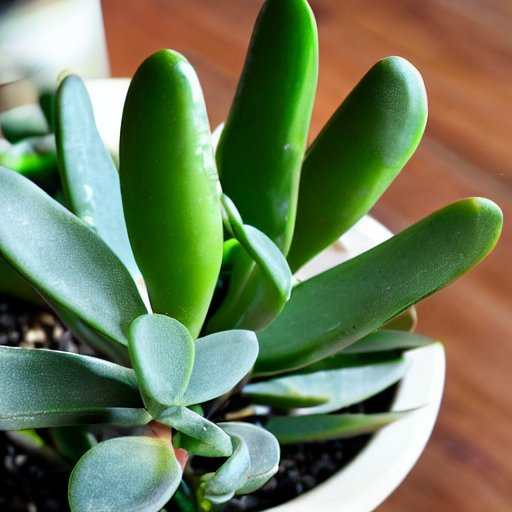
End of the Day, A plant is a plant, it does bring calm and positive energy. Did you know this plant should not get placed in the bathroom or washroom as water flows in those rooms and if you flush anything out then it will also flush your positive energy out.
Did you know many people even give jade plants to their friends and family? The white attractive flower bloom is a part of great care you have done to successfully grow this plant.
three words that I can say is jade plant symbolizes luck, brotherhood and thriving conditions of good fortune.
These plants have enlarged oval shaped leaves which are dark in color. These plants’ ability to store water can save it from dry states.
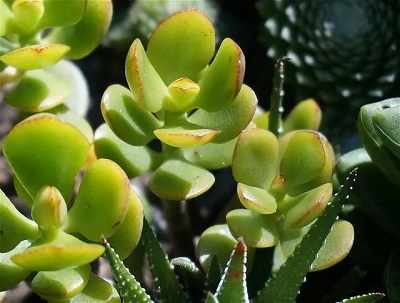
| Specification | Description |
|---|---|
| Common Name | Jade Plant |
| Scientific Name | Crassula ovata |
| Plant Type | Succulent |
| Mature Height | Up to 3 feet (0.9 meters) |
| Mature Width | Up to 2 feet (0.6 meters) |
| Leaf Color | Dark green, sometimes with red or brown edges |
| Leaf Shape | Thick, fleshy, oval-shaped leaves |
| Stem Color | Brownish-green or reddish-brown |
| Flower Color | Pink or white |
| Flowering Period | Late winter to early spring |
| Light Requirements | Bright, indirect sunlight |
| Watering | Allow soil to dry out between waterings |
| Soil Type | Well-draining soil mix |
| Temperature | Average to warm temperatures (60-75°F / 15-24°C) |
| Humidity | Moderate humidity levels |
| Toxicity | Mildly toxic to pets and humans if ingested |
| Propagation | Stem cuttings or leaf cuttings |
| Common Uses | Houseplant, bonsai, or outdoor landscaping |
Jade Plant Spiritual Meaning
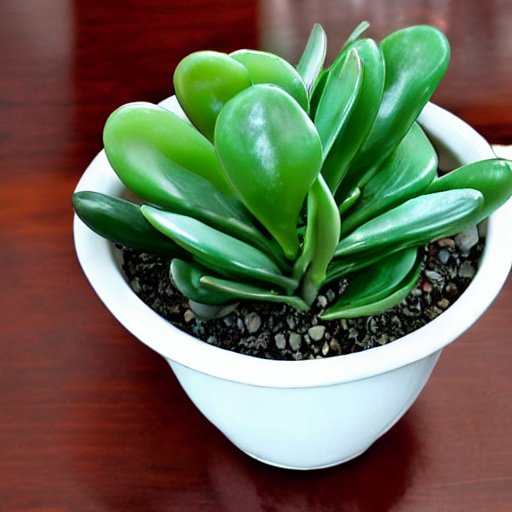
Spiritually, Jade plant meaning symbolizes luck, flowing positive energy, friendship, and financial boost to one’s owner. Jade plant also represents closeness, prosperity, good fortune. Green leaves with stored water means a stored wealth can be expected. Jade plant has white pinkish flowers that portray the beauty of good-fellowship, kindliness, friendship, benevolence. Many believe the jade plant also symbolizes provides good luck, in Asia it is believed to activate wealth. When this jade plant blooms it symbolizes close friendship, support, prosperity, bond between two souls. Even the happy, and sometimes energetic, affectionate bond of friendship shows by those green foliage.
Jade is often called a money tree, lucky plant and that way people are curious why this is so. This curiosity leads to them knowing about jade plant symbolism and how it represents wealth, happiness, friendship and prosperity. Its leaves, blooms show great meaning. That is why this plant became a best plant which is sold on many platforms and created profits for many so it has provided them good luck or I can say now they have good luck as they generated wealth in a good way for themselves and the environment.
Jade as you know is a good succulent plant that thrives with minimum effort and it draws meaning in feng shui as well. A person who has feng shui plants is more connected with nature and they will become a better person as humans and also as it gives benefits to the owner as well.
Jade Plant Benefits
There are some benefits that placing an indoor plant like jade can give you in the long term. With Improving Air quality from poor to good, slow growing, Minimal maintenance, Good medicinal benefits, Symbol of wealth, Enhance the creativity indoors, Other use could be it will increase the humidity inside the house.
For more information on Jade plant benefits Check.
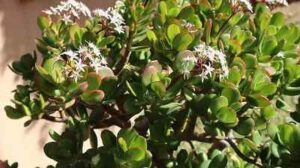
What does it mean when someone gives you a jade plant?
The jade plant meaning is often given as a gift to convey good luck and prosperity. It is believed to represent prosperity in business and good fortune in various cultures. The jade plant is also a well-liked present among friends and family since it is often connected with friendship and enduring connections. The plant is a perfect gift for someone going through a difficult time because of its adaptability and capacity to survive in a range of environments, which also represent strength and perseverance.
The jade plant is a highly favored gift that is often associated with good luck and prosperity. It holds symbolic significance in various cultures, representing success in business and positive outcomes. Additionally, it is commonly exchanged among friends and family as a symbol of friendship and lasting relationships. The adaptability and resilience of the jade plant also make it an ideal gift for those facing difficult times, as it represents strength and perseverance.
In many cultural traditions, the jade plant is believed to bring good fortune and prosperity, particularly in the realm of business. Its vibrant green leaves resemble jade coins, which have long been associated with wealth and abundance. By gifting a jade plant, individuals express their hopes for the recipient’s prosperity in their professional endeavors, signifying support and well-wishing.
Is gifting a jade plant lucky?
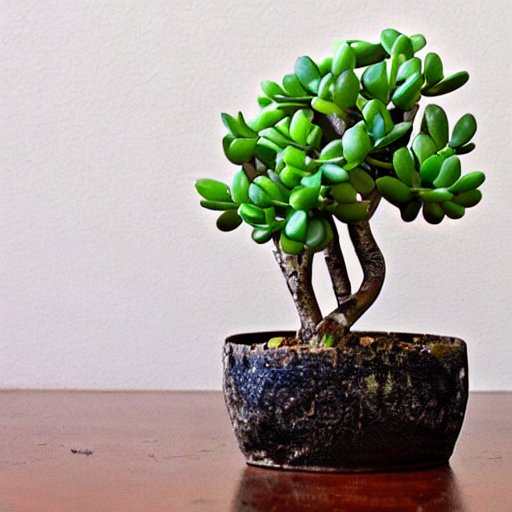
Yes, gifting a jade plant meaning is considered lucky in many cultures. When placed in certain regions of the home or workplace, the jade plant is believed to bring luck and prosperity in Feng Shui. It is believed that the plant’s large, round, thick leaves, which resemble coins, would draw prosperity and plenty. The jade plant is also connected to the wood element, which stands for vigor and growth.
Gifting a jade plant is considered lucky and auspicious in many cultures around the world. According to the principles of Feng Shui, an ancient Chinese practice of harmonizing spaces, placing a jade plant in specific areas of the home or workplace is believed to attract good luck, prosperity, and positive energy. The jade plant’s distinctive features, including its large, round, and thick leaves, which resemble coins, are thought to symbolize wealth and abundance.
In Feng Shui, careful consideration is given to the placement of objects and elements within a space to create balance and harmony. The jade plant’s resemblance to coins makes it particularly significant for attracting financial prosperity. When placed in areas associated with wealth and abundance, such as the southeast corner of a room or the entrance of a home or office, the jade plant is believed to invite prosperity and enhance one’s financial prospects.
Jade plant feng shui placement
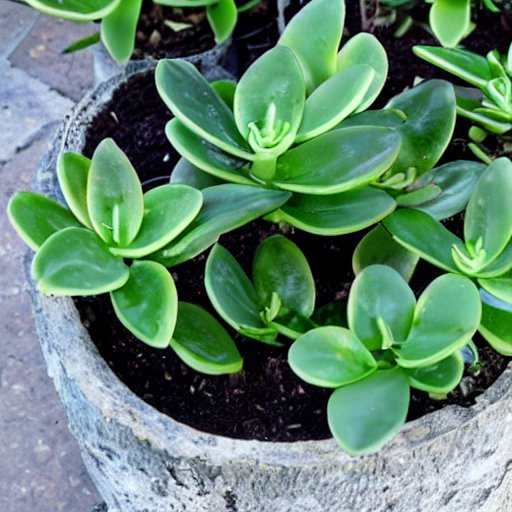
According to the principles of Feng Shui, the placement of a jade plant within a home or office is believed to be crucial in attracting positive energy and promoting luck and abundance, particularly in the realm of wealth and prosperity. The southeast corner of a space is often considered the most favorable location for a jade plant as it is associated with financial well-being and abundance. By placing the jade plant in this specific corner, individuals hope to enhance the flow of wealth and invite prosperity into their lives.
Significance
The jade plant’s significance goes beyond its ornamental value. It is often seen as a symbol of good fortune and abundance. In various cultures, having a jade plant in the home or office is believed to attract positive energy and promote financial prosperity. Its vibrant green leaves, which resemble jade coins, are thought to represent wealth and success. By incorporating the jade plant into their surroundings, individuals hope to invite prosperity and create an environment that fosters abundance.
What Does Jade bonsai tree mean?
The jade bonsai tree is a miniature version of the jade plant, grown and trained into a bonsai form. The jade bonsai tree has the same positive meaning of luck and prosperity as the full-sized jade plant. A common option for meditation rooms and other peaceful areas, the bonsai variety of the plant is also believed to encourage balance and tranquillity. Each tree in the bonsai art has a different tale and significance, and the practice of bonsai itself is rich in history and symbolism.
Why is the jade plant called a money tree?
The reason behind jade plant called as money tree because it bring good fortune and luck and it was also named as a money tree or lucky plant. As per feng shui, Jade plant brings positive chi(energy) which is good for you and your family as this encourages you to achieve your goals with that you can expect great health and good partner relationships.
Where should you put a jade plant in your house?
Jade plant is a plant that is lucky for the house so why should you have one. It grows beautifully in a room with a south facing window. Moms are one put jade plant in Kitchens, Company employees place it near every corner with windows so they get enough sunlight. Jade thrives in 66 to 74 degree F in ideal room temperature, yes it needs care to properly grow this plant.
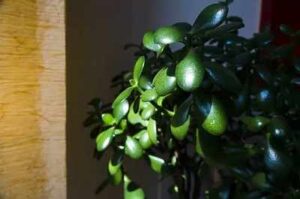
Where should you place a jade plant in your house?
Chinese Feng Shui Tells about placement of Jade plants should be East Side or Location or Corner that comes in East as this brings good health for the family, Flowing of Wealth, Luck, Innovation, creativity in children, Encourages productive mind of the house people.
How do I care for my jade plant for good luck?
- To care for jade plant always grow this plant in Indirect light coming & best would be the South Facing window.
- Make sure to check water every time you pour it to avoid any overwatering issue. Check 1-2 inch top soil if it’s dry then give jade water.
- Using Best Soil for your jade plant is the key , Here Suggesting My best pick Miracle gro potting mix of Palm, Cactus, Citrus. You can also get plant food which you can give it in the growing season. Most importantly read instructions for better use of formula and you can get beautiful green leaves and white flowers of jade.
- Pruning is also one of the most important factors for caring for jade plants. Whenever you have free time, trim all the dead leaves and branches , diseased one as well.
Can I put a jade plant in the bathroom?
You should avoid putting jade plants in the bathroom or any closed area like bedrooms as this will not give them proper light which results in poor growth of jade plants. Placing jade in the Hall or near the South Facing window can be beneficial. If this plant grows best then it gives good fortune and positive vibes.
BUY JADE PLANT FROM OUR RECOMMENDATION
Different Varieties of Jade Plants
here are 30 types of jade plants to know and grow.
- Baby’s Necklace (Crassula perforata): This trailing succulent features stacked leaves resembling a string of beads, hence the name “Baby’s Necklace.”
- Propeller Plant (Crassula falcata): This jade plant has distinct propeller-shaped leaves that curve upwards, giving it a unique and eye-catching appearance.
- Gandalf Jade (Crassula ‘Gandalf’): Named after the famous wizard from “The Lord of the Rings,” this cultivar has elongated, pointed leaves with a grayish-green hue.
- Miniature Pine Tree (Crassula tetragona): As the name suggests, this jade plant resembles a small pine tree with dense, needle-like leaves.
- Variegated Jade Plant (Crassula ovata): This variety showcases beautiful variegation in its leaves, with patches of cream, yellow, or pink contrasting against the green.
- Crosby’s Red (Crassula ovata ‘Crosby’s Red’): With its deep red leaves, this cultivar adds a splash of vibrant color to any collection of jade plants.
- Ripple Jade Plant (Crassula arborescens undulatifolia): The wavy, undulating leaves of this jade plant create an intriguing texture and visual interest.
- Trailing Jade (Crassula rupestris): Ideal for hanging baskets or cascading planters, this trailing jade plant has long, trailing stems adorned with small, round leaves.
- Blue Bird Jade (Crassula arborescens subsp. undulatifolia ‘Blue Bird’): This cultivar showcases blue-gray leaves and a compact, shrub-like growth habit.
- Silver Dollar Jade (Crassula arborescens subsp. undulatifolia ‘Silver Dollar’): The round, silvery leaves of this variety make it a standout choice for succulent arrangements.
- Hobbit Jade (Crassula ovata ‘Hobbit’): Named after J.R.R. Tolkien’s “The Hobbit,” this jade plant has tubular leaves with red tips, resembling miniature trumpets.
- Blue Waves Jade (Crassula arborescens subsp. undulatifolia ‘Blue Waves’): With its undulating blue-gray leaves, this jade plant adds a touch of tranquility to any space.
- Calico Kitten (Crassula pellucida ‘Variegata’): This trailing jade plant features heart-shaped leaves variegated with pink, cream, and green, reminiscent of a calico cat.
- Campfire Crassula (Crassula capitella): Aptly named for its fiery red or orange leaves, this jade plant brings a warm, vibrant energy to your succulent collection.
- Gollum Jade (Crassula ovata ‘Gollum’): Another cultivar inspired by J.R.R. Tolkien’s works, this jade plant has elongated, tubular leaves with red tips, resembling Gollum’s fingers.
- Shrek’s Ears (Crassula ovata ‘Gollum’ f. monstrosa): This peculiar jade plant variety features twisted, contorted leaves that resemble the famous ogre’s ears.
- Elephant Bush (Portulacaria afra): Though not a true jade plant, the Elephant Bush shares similar care requirements. It has small, round leaves and a gnarled, tree-like growth habit.
- Horse’s Tooth Jade (Crassula rupestris subsp. marnieriana): Also known as Crinkle Leaf Plant, this jade variety has narrow, elongated leaves with toothed edges.
- Lemon and Lime Jade (Crassula ovata ‘Lemon and Lime’): With its bright green leaves and yellow edges, this jade plant adds a zesty pop of color to your succulent collection.
- Red Pagoda (Crassula corymbulosa): This stacked succulent features leaves arranged in a pagoda-like structure, with vibrant red tips that intensify under bright light.
- Hummel’s Ghost (Crassula ovata ‘Hummel’s Ghost’): One of the rarest jade plant cultivars, it has ghostly gray-green leaves with a powdery coating, giving it an ethereal appearance.
- Lancaster Variegated (Crassula ovata ‘Lancaster Variegated’): Another rare variety, this jade plant has striking variegation with creamy white and green patterns on its leaves.
- Rex Jade (Crassula ovata ‘Rex’): With its compact growth habit and densely packed leaves, this jade cultivar is an excellent choice for bonsai enthusiasts.
- Coral Jade (Crassula arborescens): This jade plant features green, triangular leaves with vibrant red or coral-colored edges, adding a touch of tropical flair.
- Silver Dollar Vine (Crassula arborescens subsp. undulatifolia ‘Silver Dollar Vine’): Similar to the Silver Dollar Jade, this variety has silvery leaves but grows in a trailing, vine-like manner.
- Tom Thumb Jade (Crassula rupestris subsp. marnieriana ‘Tom Thumb’): This miniature jade plant forms dense clusters of tiny, cylindrical leaves, perfect for terrariums and fairy gardens.
- Red Coral Jade (Crassula rupestris ‘Red Coral’): With its branching, coral-like structure and red-tipped leaves, this jade plant adds a unique and captivating element to any arrangement.
- Hedgehog Jade (Crassula tetragona ‘Hedgehog’): This compact jade plant has densely packed, spiky leaves that resemble the quills of a hedgehog.
- Cocoon Plant (Crassula muscosa): Also known as Watch Chain or Lizard’s Tail, this jade variety has cylindrical leaves tightly stacked along trailing stems, resembling a chain or lizard’s tail.
- Sunset Jade (Crassula ovata ‘Sunset’): This stunning cultivar displays a range of hues, from yellow and orange to pink and red, creating a beautiful sunset-like appearance.
FAQs
What do jade plants symbolize?
Jade plant meaning symbolizes prosperity, success, and wealth in various cultures and belief systems. The symbolism arises from the resemblance of jade plant leaves to coins. The round, plump leaves are believed to represent growth and abundance, making jade plants highly regarded as symbols of good luck. In the practice of feng shui, jade plants are often placed near entrances or in areas associated with wealth to attract positive energy and financial prosperity.
Is it good luck to give a jade plant?
Yes, giving a jade plant meaning as a gift is considered to bring good luck and prosperity to the recipient. Jade plants have a long-standing association with wealth and abundance, making them an auspicious gift choice. Whether it’s a housewarming gift or a gesture of friendship, the act of giving a jade plant signifies the desire for the recipient to experience success and good fortune in their endeavors. It is believed that the positive energy and blessings associated with jade plants are passed on to the person receiving the gift.
Why is jade plant not kept in the bedroom?
Jade plants are not typically recommended for placement in the bedroom due to their nighttime oxygen release. Like many plants, jade plants undergo a process called photosynthesis during the day, where they absorb carbon dioxide and release oxygen. However, at night, the process reverses, and they absorb oxygen while releasing carbon dioxide. While the amount of oxygen consumed by a jade plant is relatively small, it is generally advised to keep oxygen-producing plants outside the bedroom to maintain optimal air quality for better sleep.
Where should jade plants not be placed?
Jade plants should not be placed in areas with limited windows and insufficient light exposure, such as bathrooms. These plants thrive in bright, indirect sunlight, and placing them in a low-light environment can hinder their growth and overall health. Bathrooms, in particular, tend to have high humidity levels, which may lead to excessive moisture in the soil and promote the development of root rot. It is best to choose well-lit locations with good air circulation for jade plants to thrive.
What makes a jade plant happy?
Jade plants are relatively low-maintenance and can be quite happy with proper care. They enjoy well-draining soil, so using a cactus or succulent mix is recommended. When placed outdoors, they prefer bright, indirect sunlight, while indoors, they require a location with ample sunlight. Jade plants are known to be drought-tolerant, so it’s important not to overwater them. Allow the soil to dry out partially between waterings, ensuring the roots have a chance to breathe. Additionally, jade plants appreciate moderate temperatures, preferably between 65-75°F (18-24°C), and they can benefit from occasional fertilization during the growing season.
Wrap up
I hope you get the answer on “Jade Plant Meaning” and if you like to read more articles check below.
Snake Plant Leaves Bending, Folding, Dropping Down(Fix)
Snake Plant Brown Tips – Colored Spots, Damaged Leaves(All Fix)
Prayer Plant Toxic to Cats – Is this Houseplant Safe?
Reference:
https://hort.extension.wisc.edu/articles/jade-plant-crassula-ovata/
https://hgic.clemson.edu/factsheet/jade-plant/
https://plants.ces.ncsu.edu/plants/crassula-ovata/
https://plants.ces.ncsu.edu/plants/crassula-ovata-variegata/
https://www.uaex.uada.edu/yard-garden/resource-library/plant-week/jade-plant.aspx
https://planttalk.colostate.edu/topics/houseplants/1320-jade-plant/
© 2024 Lotusmagus.com. All rights reserved. This content is protected by copyright. Visit Lotusmagus.com for more information.
